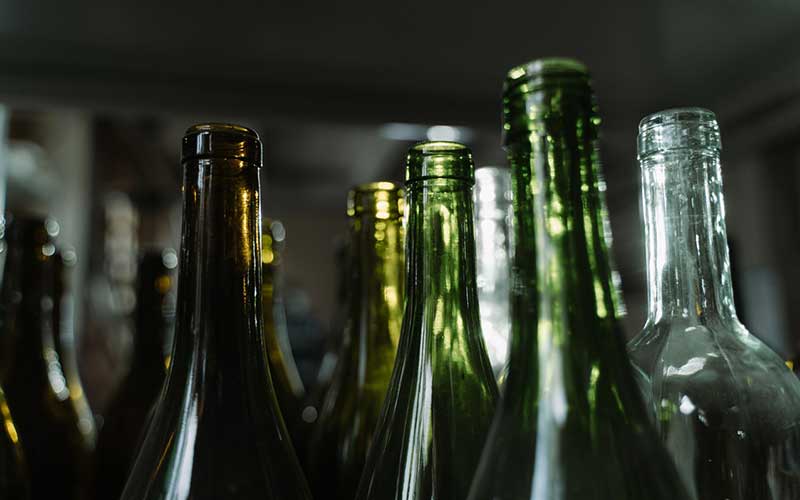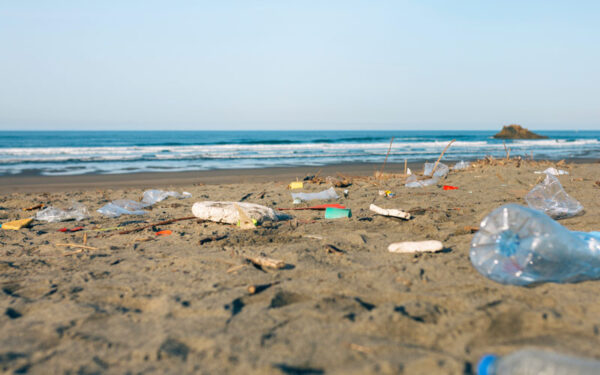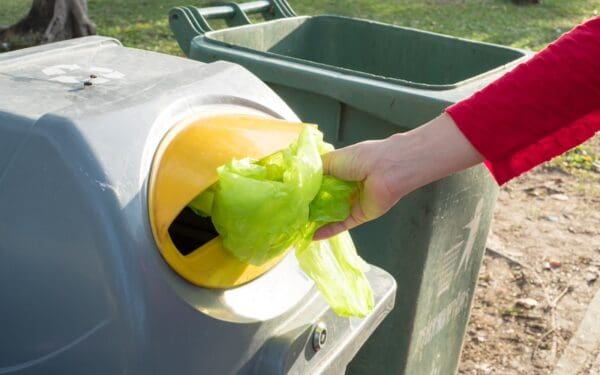
Today, beverage containers make up 75% of plastic waste in the United States. But before plastic containers came on the scene, glass was the go-to material for packaging everyone’s favorite beverages. Photo: cottonbro from Pexels
The world has a plastic problem. In 2018 alone, global plastic production reached about 300 million tons. That’s roughly equivalent to the mass of the entire human population on earth. What’s more, of all the plastic ever made only a meager 9% has been recycled.
Staring these facts in the face can be intimidating. And wrestling humanity away from single-use plastics will not be easy. But if history has taught us anything, it’s this: Humans can survive without plastic.
Now, I know in today’s world – and beyond – we will always have plastic products. But by taking small, strategic steps, we can effectively reduce our reliance on single-use plastic and move towards Zero Waste alternatives everywhere we can.
Beverage Containers: A Good Place to Start Reducing Plastic Waste
Where does our journey to reduce plastic waste begin? With single-use bottles. The beverage options at grocery and corner stores have grown dramatically in recent decades – and most of them get packaged in single-use plastic bottles.
Not only do these beverage containers make up 75% of plastic waste in the United States, but their pervasiveness feels crushingly permanent. And while younger generations may not remember a time when plastic containers didn’t line our beaches, it was only in the 1950s that these single-use bottles began their rapid rise. Before then, everyone did something that feels radical today – reusing glass bottles a dozen times over.
Before plastic containers came on the scene, glass was the go-to material for packaging everyone’s favorite beverages. And manufacturers were desperate to get those glass bottles back. You see, back then glass was expensive. So to save on costs, manufacturers reused bottles rather than produce new ones. To incentivize reuse, they charged a small deposit fee on each bottle. Consumers got their deposit back when returning the empty container to a redemption center. Manufacturers would then clean those empty bottles, refill them, and put them back into circulation.
These reuse programs were very popular up until the 1950s, when bottle makers began experimenting with disposable glass and eventually plastic. At that point, manufacturers began dropping deposit fees and abandoning reusable containers altogether. In turn, U.S. reuse programs were driven into extinction by large single-use bottle manufacturers as early as the 1960s. But others held out for much longer. Enter the Canadian province of Prince Edward Island.
Prince Edward Island, a Refill Hold Out
For years, Prince Edward Island was known for its robust bottle reuse and refill system. Not only did it offer the usual deposit refund on refillable beverage containers, but it also banned all soft drinks and alcoholic beverages that came in single-use bottles. What’s more, with a staggeringly high bottle return rate of 98%, the system kept the province’s beautiful beaches clear of plastic trash for decades.
Sadly, the island province repealed the ban on non-refillable containers in 2008 – allowing businesses to sell single-use bottles. With that, the island’s refill system had to adapt. Today, the Island maintains a drastically smaller reuse and refill program, while focusing its efforts more on recycling single-use bottles. In the decade-plus since repealing the plastic bottle ban, the bottle return rate has dropped to around 85%. While still very high compared to other provinces and the average in the U.S., it’s lower than the 98% rate when plastic bottles were banned.
All of this is to say that, even a few years ago, it was possible to reduce plastic waste by taming the plastic bottle problem with the help of strong regulations and incentives.
Reuse + Recycling = Ideal Solution for Reducing Plastic Waste
Systems combining the return of both refillable and recyclable bottles is common internationally. In fact, most Canadian provinces have refill systems in some form, especially for beer. And many European countries, particularly Germany, have been using refillable bottles, alongside traditional recycling programs, for decades. Unfortunately, these hybrid refill/recycling bottle return centers are virtually unheard of in the United States. But they wouldn’t be hard to implement.
To start, states with established bottle bills could piggyback off their existing infrastructure of bottle recycling systems. Take Oregon – the state has launched a new bottle refill program for craft beer where consumers can return the beer bottles, alongside other recyclable bottles, at Portland redemption centers. Redemption centers clean the beer bottles and return them so breweries can refill the containers with more beer.
Today, many environmentalists are advocating for states across the country to update their bottle recycling bills. And some are even pushing for a national bottle redemption system. This resurgence of action around bottle bills could present the perfect opportunity to relaunch refill systems in the U.S. After all, as we’ve seen, these hybrid refill/recycling redemption systems are a tangible way to reduce plastic waste. But the first step is empowering people to reject the idea that single-use plastics are a permanent part of society. We’ve run large-scale, successful circular refill systems before, and we can do it again.
To stay in-the-know on our efforts advocating for bottle refill systems, sign-up to receive our emails:




